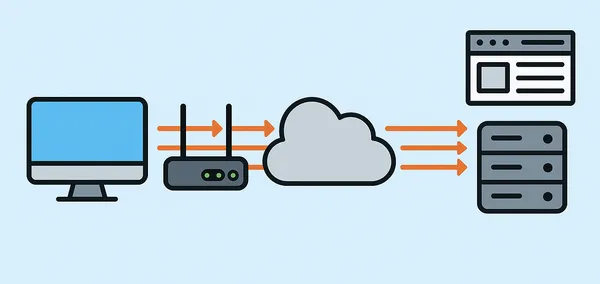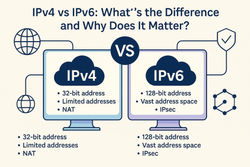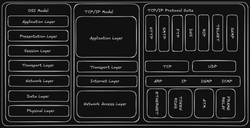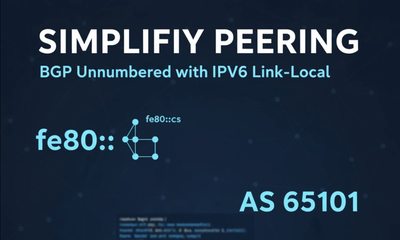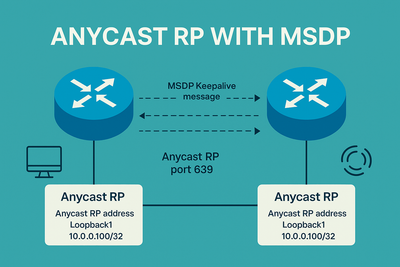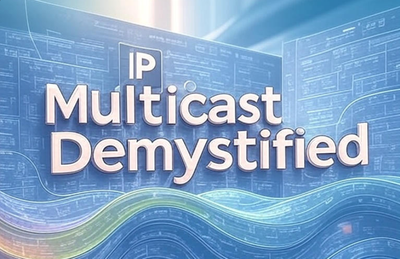When you type a website address into your browser, a complex series of events unfolds behind the scenes, involving multiple layers of network protocols. This "packet flow" ensures that the website's content reaches your screen.
Visiting https://example.com (Secure Connection with TCP/TLS)
Visiting a secure website (https://) using the traditional TCP/TLS stack involves several critical steps, with an added layer of encryption to protect your data.
- DNS Resolution (The Address Book Lookup)
- Your computer first needs to translate
example.cominto an IP address (e.g.,93.184.216.34). - Your browser queries a DNS (Domain Name System) resolver.
- The DNS resolver, if it doesn't have the record cached, will recursively query other DNS servers until it finds the authoritative server for
example.com, which provides the correct IP address. - The IP address is then returned to your computer.
- Your computer first needs to translate
- TCP Three-Way Handshake (Establishing a Reliable Connection)
- Once your browser has the IP address, it initiates a TCP (Transmission Control Protocol) connection to the web server on port 443 (the standard port for HTTPS).
- This involves a "three-way handshake":
- SYN (Synchronize): Your computer sends a SYN packet to the server, proposing a connection.
- SYN-ACK (Synchronize-Acknowledge): The server responds with a SYN-ACK packet, acknowledging your request and sending its own synchronization request.
- ACK (Acknowledge): Your computer sends an ACK packet back, confirming the connection is established.
- At this point, a reliable, full-duplex connection is ready.
- TLS/SSL Handshake (Securing the Communication)
- This is the "S" in HTTPS. Before any application data is sent, a Transport Layer Security (TLS, formerly SSL) handshake occurs:
- Client Hello: Your browser sends a "Client Hello" message, listing its supported TLS versions, cipher suites, and a random number.
- Server Hello: The server responds with a "Server Hello," choosing the best TLS version and cipher suite it supports from the client's list, along with its own random number and its digital certificate.
- Certificate Exchange: Your browser verifies the server's certificate.
- Key Exchange: The client and server exchange or derive a shared "pre-master secret" using cryptographic methods.
- Cipher Spec & Finished: Both sides use the pre-master secret to generate symmetric session keys. They then send "Change Cipher Spec" and "Finished" messages, encrypted with these new keys, signaling that all subsequent communication will be encrypted.
- This is the "S" in HTTPS. Before any application data is sent, a Transport Layer Security (TLS, formerly SSL) handshake occurs:
- Encrypted HTTP Request and Response (Application Data Exchange)
- Now, securely over the established TLS tunnel, your browser sends an HTTP GET request (e.g.,
GET / HTTP/1.1orGET / HTTP/2) for the website's content. This request is encrypted. - The server processes the request, retrieves the resource, and sends the HTTP response back. This response, containing the website's content, is also encrypted using the session keys.
- Your browser decrypts the response and renders the webpage.
- Now, securely over the established TLS tunnel, your browser sends an HTTP GET request (e.g.,
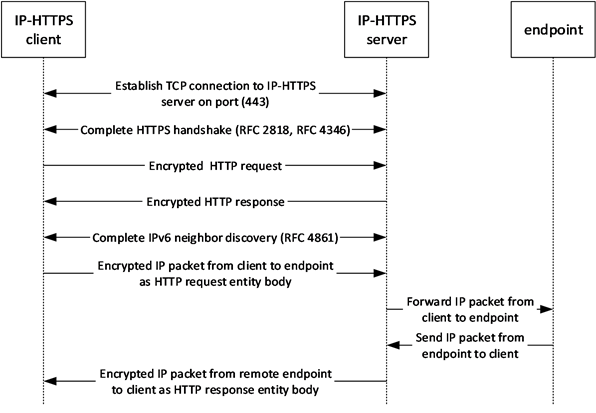
Visiting http://example.com (Unsecure Connection)
Visiting an unsecure website (http://) follows a similar flow but notably lacks the crucial encryption step.
- DNS Resolution: Identical to HTTPS,
example.comis resolved to an IP address. - TCP Three-Way Handshake: Your browser initiates a TCP connection to the web server on port 80 (the standard port for HTTP). The SYN, SYN-ACK, ACK process is the same.
- Unencrypted HTTP Request and Response (Direct Data Exchange)
- Crucially, there is no TLS/SSL handshake.
- Your browser directly sends the HTTP GET request (e.g.,
GET / HTTP/1.1) to the server in plaintext. - The server processes the request and sends the HTTP response, containing the website's content, back to your browser in plaintext.
- Anyone intercepting these packets can read all the information exchanged without any effort.
The Evolution to QUIC and HTTP/3: A Faster, More Resilient Future
While TCP and TLS have served the internet admirably, they have inherent limitations, especially for modern web applications that require concurrent streams of data. HTTP/2 on top of TCP/TLS tried to address some of these with multiplexing, but it still suffered from "head-of-line blocking" at the TCP layer (a lost packet for one stream would block all other streams on the same TCP connection).
Enter QUIC (Quick UDP Internet Connections) and HTTP/3. QUIC is a new transport layer network protocol designed by Google and standardized by the IETF, running on top of UDP (User Datagram Protocol) rather than TCP.



